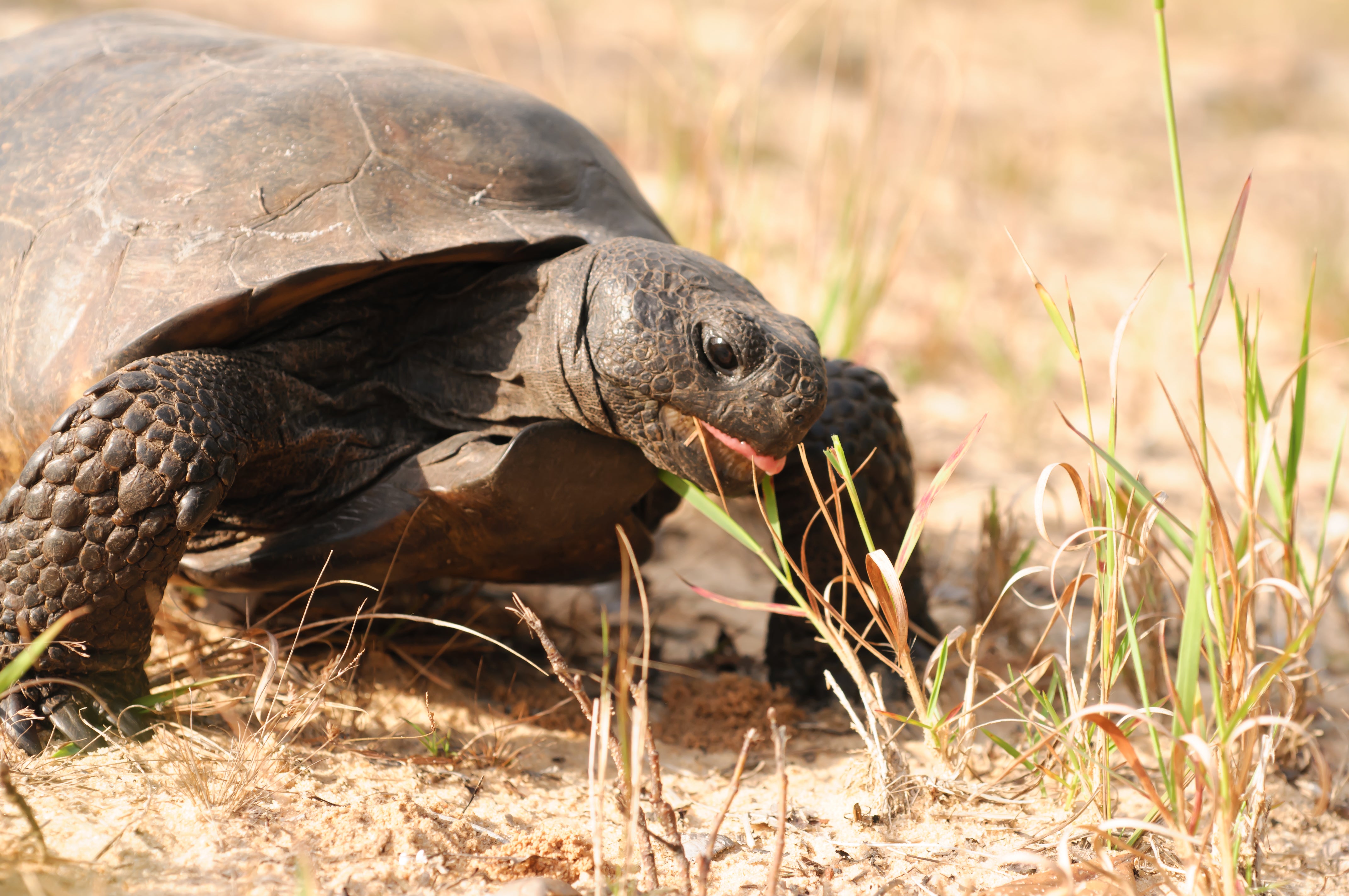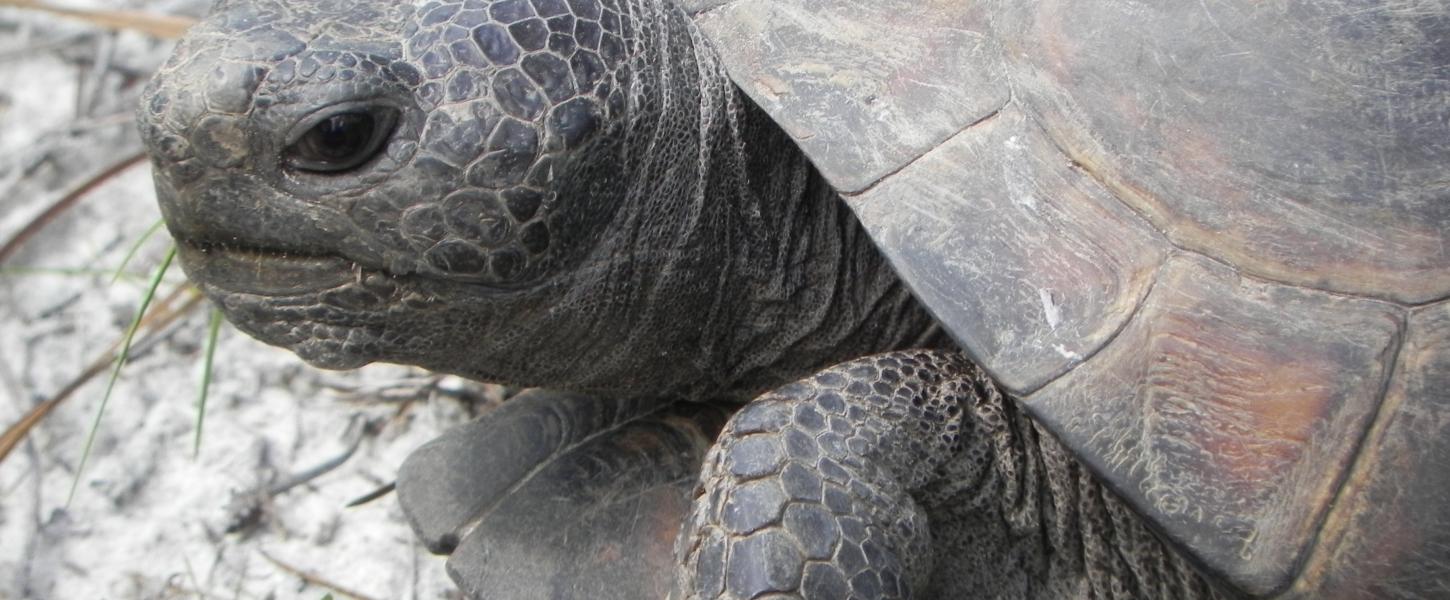
Gopher Tortoises at Tarkiln Bayou

The gopher tortoise (Gopherus polyphemus) is the mascot of Tarkiln Bayou Preserve State Park. Living along the many fire breaks, trails and the main park drive, the gopher tortoise can often be seen foraging and traveling from burrow to burrow when the weather is warm enough. The burrows of the gopher tortoise, usually one or two per tortoise, is a crucial aspect of the biological community in which they live. Their burrows provide a thermo-neutral space for keeping cool in the hot summers and warm in the cold winters. More than 350 different species are known to utilize these burrows for protection and shelter.
Gopher tortoises live in small colonies that consist of two to 20 individuals in various locations throughout the park. The soils required for viable habitat are well-drained and sandy, both of which are qualities held by much of Big Lagoon State Park making it a great habitat for gopher tortoises. The females are distinguished from the males due to their flat plastron, or underbelly, and lay eggs, usually six per clutch, once they reach reproductive maturity at approximately 20 years old. The sex of the offspring is determined by the temperature of the sand.

Gopher tortoises forage on gopher apples, cacti and whatever grass or growing vegetation they can find nearby. They make do with whatever they can find in their habitat, whether it’s the sandy scrubby flatwoods in the middle of the park or the scrub along the northern boundary of the park.
Gopher tortoises are a fire-dependent species and can suffer when fire is suppressed in their habitat, allowing woody species of plants to crowd out the understory vegetation on which the tortoises forage. In properly managed landscapes that are protected from development and managed with fire, the gopher tortoise is able to fulfill its role as a keystone species.